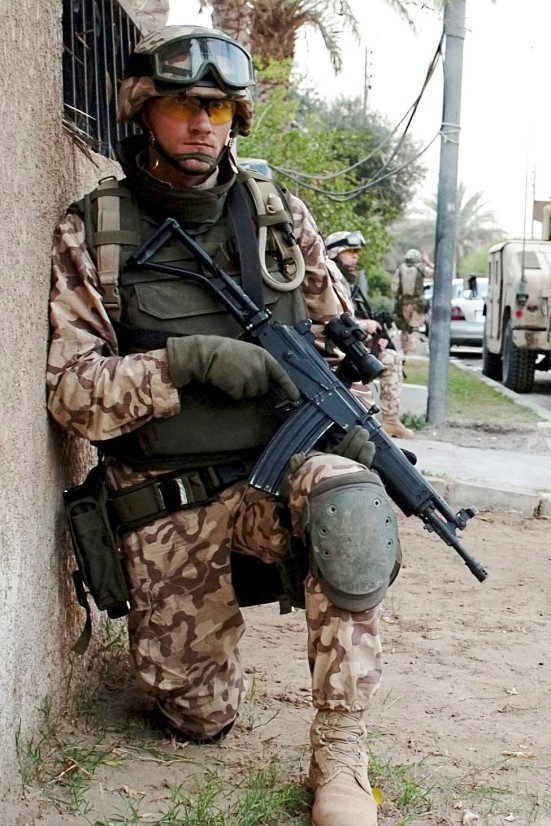In the stream of Russian snap drills that have come to be part of the ”new normal”, news broke today of a more surprising snap exercise, held by Kaitsevägi, the Estonian Defence Forces. In a surprise move, Estonia has launched an unannounced exercise involving the whole standing army made up of two infantry brigades, the aptly named 1. and 2. Jalaväebrigaad (est. infantry brigade). The exercise does not include calling up reservists.
What is truly astonishing is the rapid expansion undertaken by the Estonian Defence Forces as a whole. Before the Russian invasion of Crimea the Estonian army consisted of a single light infantry brigade, featuring wheeled transports in the form of the Patria (Sisu) XA-180EST and XA-188 APC as the only vehicles with any kind of armour protection, and while a nice long-term expansion plan had been drawn up already in 2007, little of this had materialised. The Estonian army was a professional force with ample of experience from Afghanistan and Iraq, as well as from UN missions, but it was woefully undersized and lacked key weapons systems and capabilities to be able to defend its homeland from an aggression by a modern mechanized force.
However, everything changed with the Russian invasion of Ukraine, and a number of planned procurements shifted into high gear. These included the acquisition of surplus CV9035NL infantry fighting vehicles from the Netherlands (also source of the earlier XA-188) and modern Javelin anti-tank missiles, of which especially the former is a key element in the 1. Jalaväebrigaad’s transformation into a (light) mechanised brigade. The years since have also seen the delivery of the first Mistral M3 short-range air defence missiles, which together with the Saab Giraffe radars they are networked to significantly boosts the integral air defence capability of the 1. Brigade.

Even more importantly, the army has stepped up its training regime, both in size and in complexity. The annual spring exercise of 2014, Kevadtorm 2014, was the largest held in the country up to that date, but was surpassed by the corresponding Siil 2015 exercise the following year. Siil 2015 was not only the biggest Estonian exercise to date, but it was also the first time the whole brigade took to the field to practice as a coherent unit, the first time the artillery battalion fired all their guns as a unit, and the exercise ended with the first time the whole brigade stood at attention together in a magnificent lõpurivistus (literally “finishing alignment”). To these can now be added today’s snap drill, specifically meant to test the ability of the army to respond swiftly to the emergence of a new threat (something one can’t help but feel would be a sorely needed exercise in Finland as well).
While Tallinn might be worried about their eastern neighbour, they are certainly not going to just lay flat in the hope of not provoking the bear. Instead, they are doing the best they can to plug the holes identified in the capabilities of their armed forces. The fact that certain key capabilities, such as air policing, are provided by NATO, means that they seem to be doing quite well with the limited resources they can muster with 2% of the GDP.
The next time anyone tries, Estonia is determined to not give in without a fight.


As long as they stay focused on the army they should have the resources to equip it quite well. Especially if other NATO countries can give them good deals on equipment. I have seen some noise about them aspiring to create a mini airforce with a few armed trainers to be able to do their own air policing but it would be a mistake to dilute the focus in my opinion.
They need tanks – even a few can make a big difference – and equipment like counter battery radars.
great little article. I would also add the purchasing of body armor and night vision. These are important capabilities.
Important future purchases would be self propelled howitzers (for the 1. InfBr ), mid range AA missiles and tanks. It´s really now in the hands of our Estonian military brass to exploit the current security situation and acquire good deals from our allies and looks like they have already done that with the Javelins.
Thanks for the info, didn’t know body armour and night vision had been improved! Yes, better artillery is a must. 122 mm howitzers are a great deal better than nothing, but the D-30 lacks both the range, handling qualities, and firepower to be truly competitive on the modern battlefield. Either self-propelled guns or a modern heavy howitzer, like the BAE M777, would greatly add to the lethality.
Some more info, not mentioned in the blog post:
In addition to the 44 CV9035NL we also bought 35 CV90 Mk I hulls from the Norwegians, without turrets (+2 driver vehicles):
http://uudised.err.ee/v/eesti/c62eea31-74e6-4868-bc23-469593f81b9f/eesti-ostab-norralt-37-jalavae-lahingumasina-keret
These will be rebuilt into command, MEDEVAC, mortar and poor-mans VSHORAD versions (with mistral mk3). For the mortar version, all options are still considered ranging from AMOS (highly unlikely due to cost) to the simple Israeli systems used in Stryker mortar vehicles. Rebuilding the vehicles will be done in Estonia. It would be nothing worth mentioning for Finland, but for us it’s “a first”. So good to see things are improving in that area as well.
In other news, additional Javelin missiles, some of which are Block 1, have just arrived. It was funded by USA and cost $33 mil, so presumably about 300 missiles (some news stated 200+):
http://www.postimees.ee/3625679/eesti-saab-usa-lt-tankitorjesusteemi-javelin-rakette
Live firing of Milan and Javelin by conscripts last week:
Oh, and lastly, there was also another country-wide unannounced snap-drill for the Defence League early Saturday morning 😀
Reblogged this on Finland Politics and commented:
Interesting, a comparison with Finland would be welcome
Estonians were really badly beaten and even tortured by other soldiers in the Soviet Army during the 1980s. They were called fascists etc. and even raped.